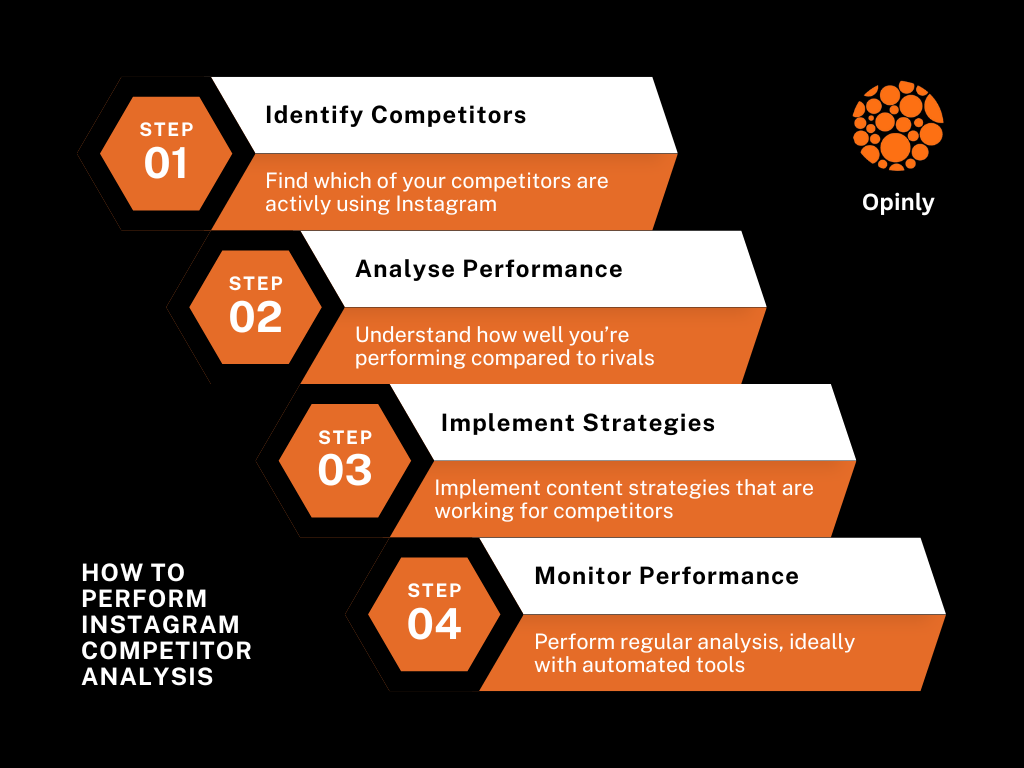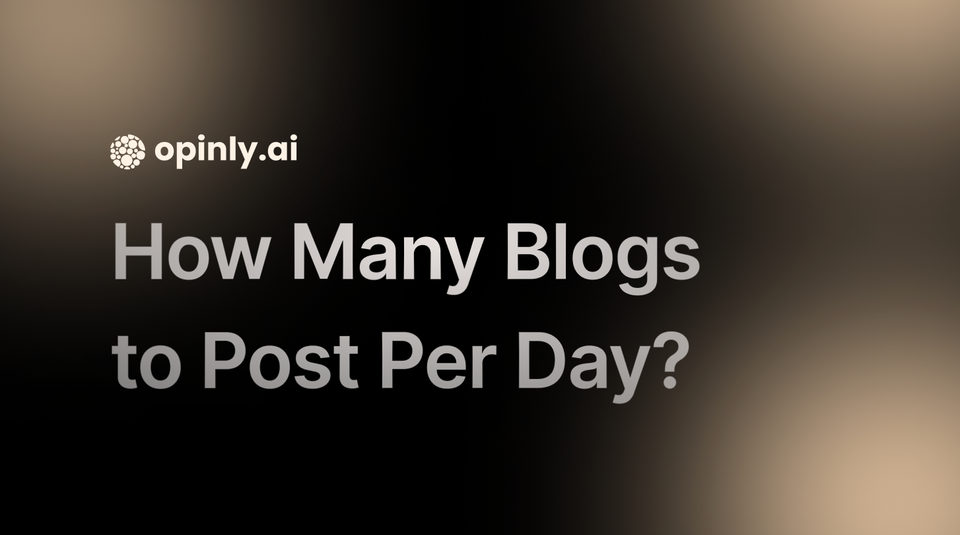8 Features to Look for in an Email Monitoring Tool
Find the best competitor email monitoring tool with these 8 essential features for tracking email marketing strategies and staying ahead in the competition.
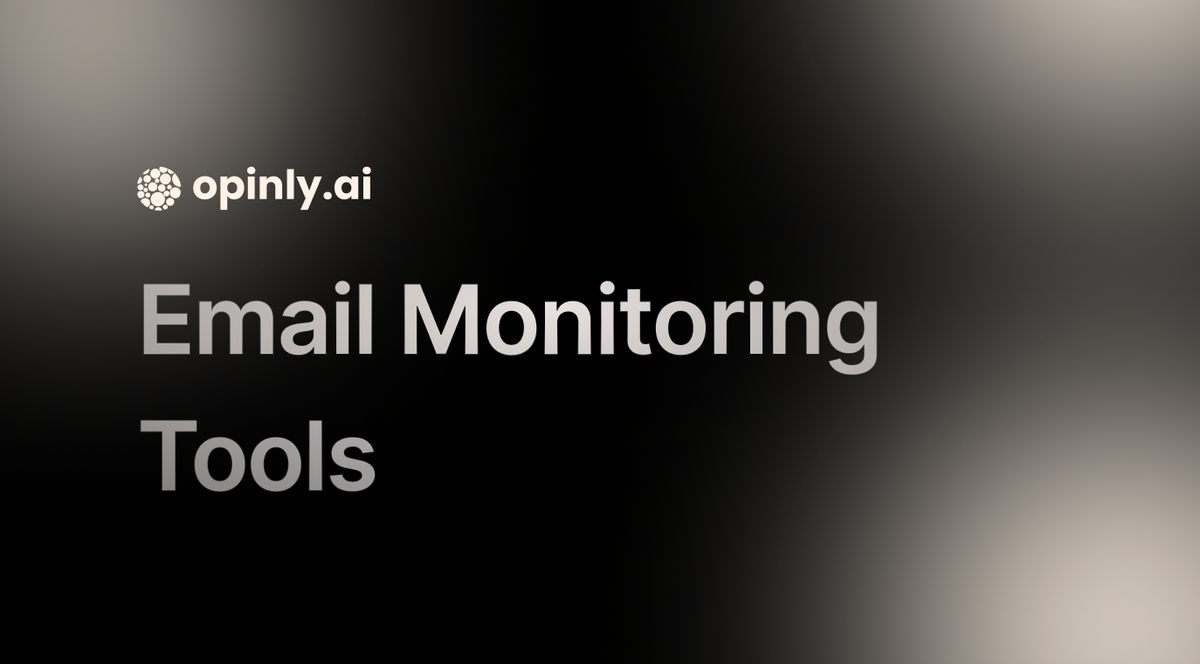
Keeping an eye on your competitors' email marketing strategies can provide valuable insights to enhance your own campaigns. By understanding what works for them, you can refine your approach, avoid common pitfalls, and discover new opportunities.
"Using a competitor email monitoring tool provides valuable insights into market trends and strategies, enabling businesses to stay ahead of the competition and refine their own email marketing campaigns for maximum impact." - David McGuckin, Software Engineer at Opinly AI and v0 Report
A reliable competitor email monitoring tool is essential for this purpose and helps keep your marketing strategies innovative by analyzing email examples from competitors. It helps you gather important data, analyze trends, and stay ahead of the competition.
In this article, we will explore eight key features you should look for when choosing a competitor email monitoring tool to ensure you make the most informed decision for your business.
What is a Competitor Email Monitoring Tool?
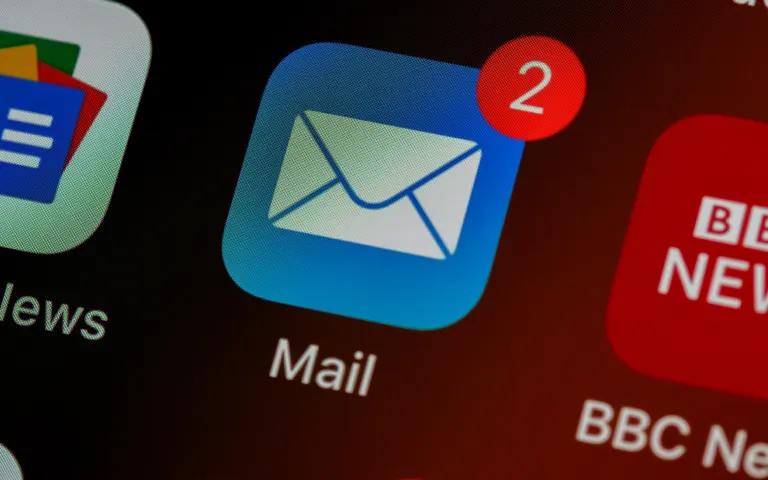
A competitor email monitoring tool is a software application that tracks and analyzes the email communications sent by your competitors.
A competitor email monitoring tool helps you gain insights into their marketing strategies, promotional campaigns, product updates, and customer engagement tactics.
By monitoring competitors' emails, you can identify trends, benchmark your performance, and develop more effective strategies to stay ahead in the market. It's a valuable resource for businesses looking to understand their competitive landscape and enhance their email marketing efforts.
What is the Benefit of an Email Competitor Marketing Tool for Email Competitive Analysis?
An email competitor marketing tool offers several key benefits for email competitive analysis.
It allows you to track and analyze your competitors' email campaigns, giving you valuable source code insights into their marketing strategies, and promotional social media marketing, and filter customer engagement methods. By understanding what works for your competitors, you can identify email trends and best email backlinks practices to apply to your own campaigns.
This competitive analysis tool helps you track competitor email strategies, showing you how they communicate with their audience, the offers they provide, sentiment analysis, and the frequency of their emails. This information is important for benchmarking your competitor's email performance.
Additionally, an email competitor marketing tool helps you improve your own email marketing efforts by learning from your competitor's successes and mistakes, whether through SEMrush insights or other analytics.
This helps you to refine your competitors’ keywords and email inspiration, create more effective campaigns, and boost your email engagement and conversion rates.
8 Important Features to Look for in a Competitor Email Monitoring Software
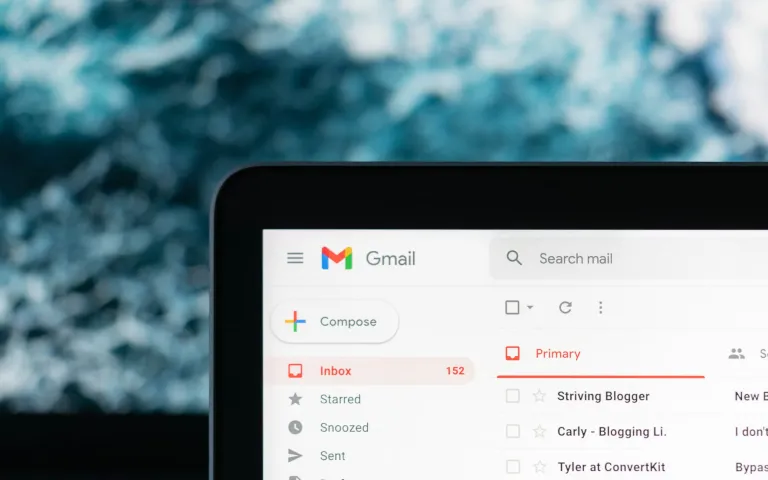
1. Comprehensive Email Strategy Tracking
A good competitor email monitoring tool should track all types of emails your competitors send out. This comprehensive analysis includes newsletters, promotional emails, and transactional messages.
By capturing a wide range of email types, you get a complete effective competitive analysis of their email marketing strategies. Newsletters can show you how they engage with their audience regularly, promotional emails can reveal their sales offers and promotions, and transactional messages can give you insights into their target audience service and follow-up processes.
Tracking your competitors’ email strategy allows you to identify what’s working for them and what’s not.
2. Real-Time Email Alerts Notifications
Staying updated in real time is important in the fast-paced world of email marketing. With real-time email alerts and notifications, you get instant updates whenever a competitor sends out an email. This feature lets you know immediately about any new developments, whether they're launching a new promotion, announcing a sale, or sending an engaging newsletter, so you can respond promptly to every competitor sends an email.
For example, if a competitor starts a flash sale, real-time alerts allow you to quickly create a counter-offer or adjust your marketing strategy to stay competitive. If they send out a highly engaging newsletter, you can analyze it right away and incorporate similar successful elements into your campaigns.
Having immediate access to this information means you can respond almost instantly to their actions. This quick adaptability is key to staying one step ahead. It ensures you're always aware of what your competitors are doing, so you can make timely and informed decisions for your own email marketing campaigns, avoiding being outdone when a competitor sends an email.
Moreover, real-time alerts can help you spot trends in your competitor's strategies, giving you a deeper understanding of their marketing tactics. This insight allows you to proactively adjust your plans and take advantage of new opportunities as they arise. By staying on top of these updates, you ensure that your email marketing efforts are always relevant and competitive.
3. Detailed Email Competitor Research Analytics
When choosing a competitor email monitoring tool, it's important to find one that offers in-depth analytics on email performance. This means the competitor email monitoring tool should provide detailed information on key metrics like open rates, click-through rates, and overall engagement.
- Open Rates
Open rates tell you how many people are opening your competitors' emails. A high open rate indicates that their subject lines and sending times are effective, which is valuable information for any email marketer. By analyzing these elements, you can adjust your own email strategies to improve your open rates.
- Click-Through Rates (CTR)
Click-through rates show how many recipients clicked on links within the email. This metric helps you understand which types of content, calls to action, and link placements are most effective for your competitors. By seeing what works for them, you can refine your own email content to encourage more clicks.
- Engagement Metrics
Engagement metrics go beyond just open and click-through rates. They include data on how long recipients spend reading the email, which sections they interact with the most, and the overall response rate. These insights provide a deeper understanding of what captures and holds the audience’s attention, making you a more effective marketer.
By understanding these metrics, you can make smarter decisions about your email marketing strategy. You’ll be able to create more compelling subject lines, develop engaging content, and place calls to action more effectively.
Detailed analytics help you learn from your competitors’ successes and failures, which leads to better performance in your own email campaigns.
4. Email Strategy and Email Content Analysis
Analyzing the design and content of your competitors' emails is important for staying competitive. You need a tool that breaks down various aspects of their emails, such as templates, design elements, and content themes.
Here’s why this analysis is so important and how it can benefit your own email marketing strategy:
- Email Templates
Look for a tool that examines the structure and layout of your competitors' email templates. Understanding how they format their emails can give you ideas for your own designs. For example, you might notice that a competitor uses a clean, minimalist layout that engages their audience effectively. Adopting a similar layout might improve your email's readability and appeal.
- Design Elements
Pay attention to the visual aspects of your competitors' emails, such as colors, images, fonts, and graphics. These design elements play a crucial role in catching the reader's eye and keeping their interest. A good tool will highlight which design elements are most commonly used by your competitors and which ones are most effective. You can then incorporate these successful elements into your own emails to enhance their visual appeal.
- Content Themes
Analyzing the themes and topics your competitors cover in their emails can provide valuable insights into what resonates with your shared audience. For example, if a competitor frequently discusses industry news and trends and receives high engagement, you might consider incorporating similar content into your emails, using email examples from successful campaigns. This helps ensure that your content is relevant and interesting to your audience.
- Identifying Trends
By regularly analyzing your competitors' emails, you can identify trends in their strategies and anticipate the next time a competitor sends an email. For instance, you might notice a competitor starts sending more frequent emails during a particular season or uses specific keywords that drive engagement. Recognizing these trends allows you to adjust your own strategy accordingly, keeping your content fresh and timely.

5. Competitive Benchmarking Research Tool
A competitive benchmarking research tool lets you compare your email performance with that of your competitors, helping you understand where you stand and identify areas for improvement with tools like v0 Report, MailCharts, and SendView.
By analyzing key metrics like open rates, click-through rates, and conversion rates, you can see how your emails measure up. This tool also helps you gain insight into their email marketing and set realistic goals based on industry standards, discover best practices by examining successful competitor strategies, and track your progress over time.
It provides data-driven insights, helping you to make informed decisions and refine your email marketing strategy for better results. Ultimately, it keeps you aware of industry trends and helps you stay competitive.
6. Historical Data with Competitive Intelligence Access
Access to historical data is important for understanding long-term trends and strategies. It allows you to see how email marketing strategies have evolved, helping you identify what has worked and what hasn’t. By analyzing past campaigns, you can spot patterns in your competitors’ successes and failures, giving you valuable insights for refining your strategies.
Historical data helps you identify seasonal patterns in email marketing. For example, if you notice competitors sending more promotional emails during certain times of the year and achieving higher engagement, you can align your campaigns with these periods to maximize results.
Tracking historical data also lets you measure your own progress. By comparing your current email performance with past data, you can see how your strategies have improved and understand the impact of the changes you’ve made.
With access to historical data, you can adjust your competitor analysis strategies based on past performance. Replicate and optimize approaches that worked well and avoid those that didn’t. This information provides competitive intelligence, allowing you to anticipate your competitors’ future moves and stay ahead.
Making data-driven decisions is easier with historical data. Instead of relying on intuition, you can base your strategies on concrete evidence of what has worked in the past. This leads to more effective and successful email marketing campaigns, helping you better compete in the inbox.
7. User-Friendly Mailing Lists Interface
Having a user-friendly interface is crucial for effectively navigating and using any email monitoring tool. It simplifies navigation, making it easy to find the features and data you need. When a tool is intuitive, you spend less time figuring out how to use it and more time analyzing your competitors’ email strategies.
A well-designed dashboard is essential. It should present all key information at a glance, organized logically, with different sections for various metrics like open rates, click-through rates, and engagement levels. This layout helps you quickly find and focus on the data that matters most.
Clear visualizations simplify data interpretation. Graphs, charts, and tables should be easy to read and understand, providing a visual representation of complex data. This helps you spot trends, compare metrics, and draw conclusions quickly.
8. Integration Email Newsletter Capabilities
Your email monitoring tool should integrate seamlessly with your existing marketing platforms, such as your email marketing service, CRM, and analytics tools. This seamless integration ensures all your tools work together smoothly, saving you time and effort.
When your email monitoring tool integrates with your other marketing platforms, it allows for streamlined data flow, improving your overall SEO efforts. This means data from different sources is automatically collected and synchronized. You won’t have to manually transfer data between systems, reducing the risk of errors and saving valuable time.
Integration provides a comprehensive view of your marketing efforts. By combining data from your email marketing service, CRM, and analytics tools, you get a complete picture of how your email campaigns are performing. This holistic view helps you make informed decisions and optimize your overall marketing strategy.
When your email monitoring tool is integrated with your analytics platform, you can generate more detailed and accurate reports. Enhanced analytics provide deeper insights into your campaigns, helping you understand what’s working and what needs improvement. This allows you to fine-tune your strategies for better results.
Integration with your CRM system helps you improve customer segmentation. By having access to all customer data in one place, you can segment your audience more effectively. This enables you to send targeted and personalized emails, leading to higher engagement and conversion rates.
Why Opinly AI is the Best Competitor Email Monitoring Tool

Opinly AI is the best competitor email monitoring tool for several compelling reasons. It offers comprehensive analytics that provide a detailed view of your competitors' email strategies, tracking metrics like open rates, click-through rates, and engagement levels. This helps you understand what works for them and why, allowing you to apply these insights to your own campaigns.
The tool also excels in analyzing email content and design, breaking down components such as subject lines, design elements, and messaging strategies. This helps you create more engaging and visually appealing emails.
Opinly AI identifies trends and patterns in your competitors' email marketing efforts, helping you stay ahead of industry trends. It also allows you to benchmark your performance against competitors, highlighting areas for improvement and setting realistic goals.
The tool provides valuable insights into the timing and frequency of your competitors' emails, enabling you to optimize your own sending schedule. Its seamless integration with existing email marketing platforms, CRM systems, and analytics tools ensures smooth data flow and a comprehensive view of your marketing efforts.
Conclusion
Choosing the right competitor email monitoring tool can significantly enhance your marketing strategy.
By focusing on the 8 key features we've discussed—accuracy and precision, advanced analytics, customizable alerts, comprehensive reporting, user-friendly interface, integration capabilities, security and privacy, and regular updates and support—you can find a tool that meets your needs and helps you stay ahead of the competition.
These features ensure that you can effectively track and analyze your competitors' email campaigns, gain valuable insights, and improve your own email marketing efforts. By staying informed about your competitors' moves and strategies, you can make smarter decisions and create more effective campaigns.
Take Your Email Marketing to the Next Level with Opinly AI

Ready to boost your email marketing strategy and stay ahead of the competition? Opinly AI is the best competitor email monitoring tool designed to provide you with actionable insights and comprehensive analysis.
With Opinly AI, you can track your competitors' email campaigns, uncover their strategies, and enhance your own marketing efforts with ease.
Don't miss out on the opportunity to gain a competitive edge. Try Opinly AI today and transform the way you approach email marketing. Sign up now and see the difference it can make for your business!
Frequently Asked Questions
1. How to see competitors' email marketing campaigns?
To see your competitors' email marketing campaigns, you can use email monitoring tools specifically designed for this purpose. These tools allow you to subscribe to and track the emails sent by your competitors. They collect and store emails, giving you access to newsletters, promotional messages, and transactional emails. Opinly AI automatically collects emails from your competitors, saving you the hassle of manually signing up for multiple lists.
2. Why is it important to monitor competitors' email campaigns?
Monitoring your competitors' email campaigns is crucial for several reasons. It helps you gain insights into their strategies, see what works for them, and learn from their successes and mistakes. By keeping up with industry trends, you can ensure your email marketing efforts are on par with or better than your competitors'.
With Opinly AI, you can track essential metrics such as open rates, click-through rates, and engagement levels, giving you a clear view of how your competitors' emails are performing.
3. What type of email analytics should I look for in an email competitor tracking tool?
Open Rates show how many recipients opened your competitors' emails, indicating effective subject lines and optimal sending times. Click-Through Rates (CTR) measure how many recipients clicked on links within the email, helping you understand which content and calls to action are most effective.
Conversion Rates reveal how many recipients took the desired action, such as making a purchase or signing up for a newsletter, indicating effective email content and calls to action. Engagement Metrics provide data on how long recipients spend reading the email, which sections they interact with the most, and overall response rates, offering deeper insights into what captures and holds the audience’s attention.
4. What are the best competitor monitoring tools in the market?
The best tool for monitoring your competitors' email marketing campaigns is Opinly AI. It offers comprehensive analytics and insights into your competitors' email strategies, helping you stay ahead of the competition.
Opinly AI provides detailed data on open rates, click-through rates, and engagement metrics, so you can see what works for your competitors. It also analyzes email content and design, helping you understand which elements are most effective. With Opinly AI, you can identify trends, benchmark your performance against competitors, and make data-driven decisions to optimize your competitor email marketing strategy.
5. How do email competitor analysis tools improve marketing strategy?
Email competitor analysis tools improve your marketing strategy in several ways. They allow you to benchmark performance by comparing your email metrics, such as open rates and click-through rates, with those of your competitors. This helps you see where you stand and identify areas for improvement, making you a better marketer in the process. By analyzing successful email campaigns from your competitors, you can discover best practices and apply those tactics to your own campaigns, including subject lines, design elements, and content strategies.
These tools help you identify industry trends by showing you what your competitors are focusing on, allowing you to stay up-to-date and adjust your strategy accordingly. They also help you optimize content by understanding which types of content engage your competitors' audiences, enabling you to create more compelling and relevant emails for your own subscribers.

